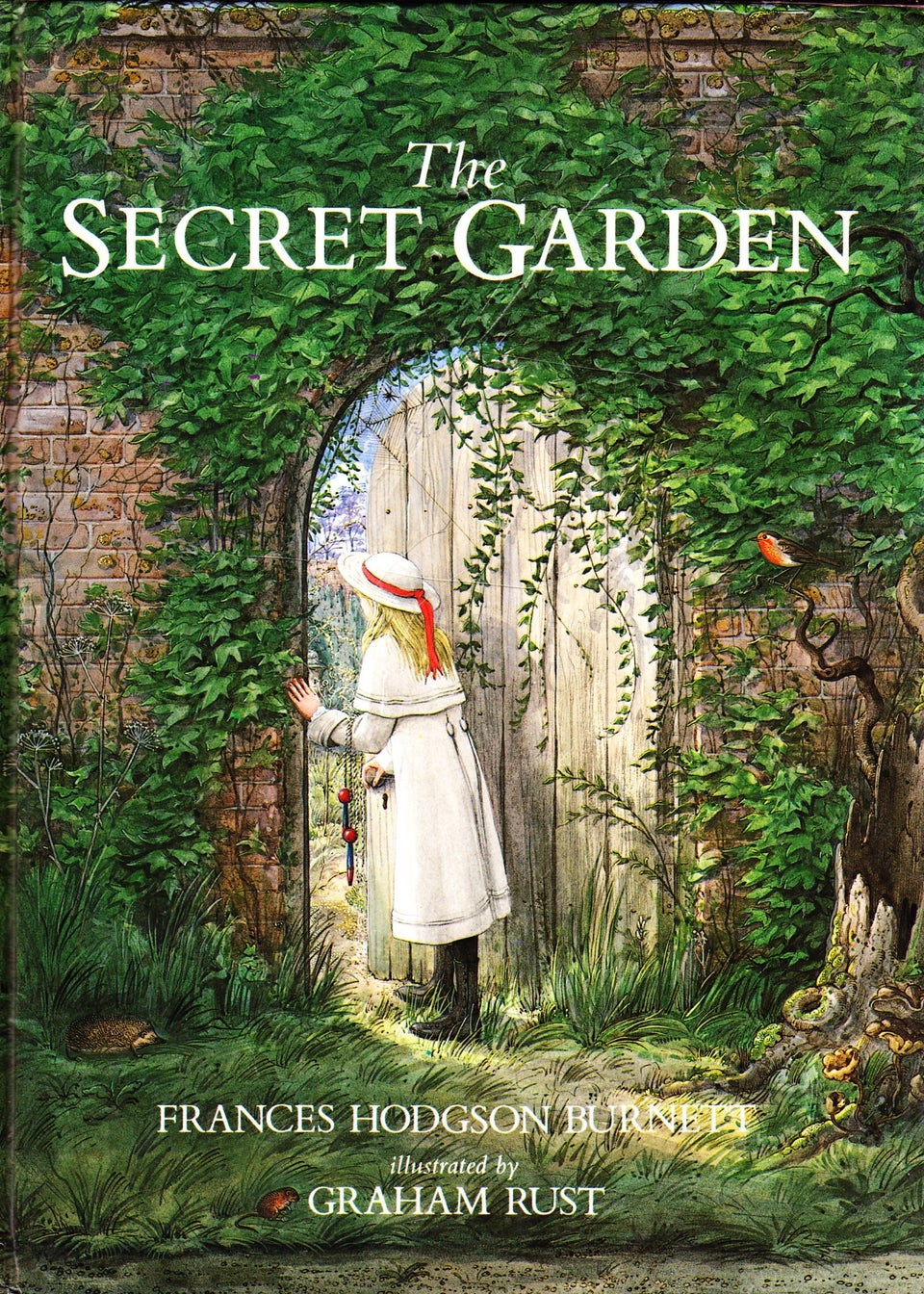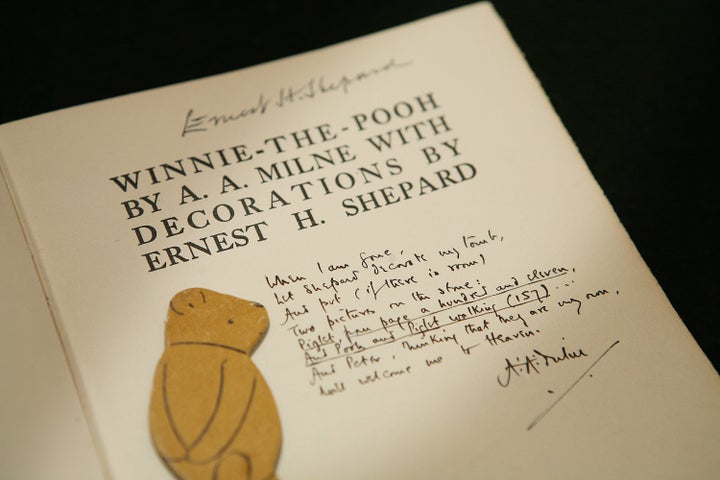
"This Writing business. Pencils and what-not. Over-rated, if you ask me. Silly stuff. Nothing in it." --Eeyore
Eeyore was a particularly anhedonic donkey who, though he was old and gray, brought tremendous joy to the readers of Winnie-the-Pooh. His penchant for pessimism was just one aspect of the complex humor of A.A. Milne, the great children's author who brought us to the Hundred Acre Wood. The quote above -- written, of course, by the celebrated writer -- is another.
Milne, born in Hampstead in the U.K. in 1882, has long been praised for his best-selling books centered on a bear named Winnie-the-Pooh and his anthropomorphic pals. And while the high remarks are well deserved, the man behind Tigger, Roo and Gopher was as enigmatic as the writing he left behind.
Were Milne still alive, he would turn an illustrious 134 years old on Monday. In honor of his birthday, here are some anecdotes from his biography that highlight just how wonderful Christopher Robin's dad really was.

1. A.A. Milne bought Winnie, the teddy bear that inspired Winnie-the-Pooh, at Harrods.
Milne's son, the real Christopher Robin, owned a teddy bear lovingly called Winnie-the-Pooh. His mother and father had purchased the bear at Harrods, despite the fact that Christopher's maternal grandfather owned the popular department store Swan & Edgar, which featured its own kind of teddy bear called the Merrythought bear.
Christopher and his mother, Daphne, would often play with Winnie -- named after a bear then living at the London Zoo -- and his ragtag group of friends. Milne often credits Daphne as a collaborator for Winnie-the-Pooh, as she would gave Christopher's toys the voices and personalities that would come to define their character counterparts.

2. Milne's childhood science teacher was H.G. Wells, author of the 1897 novel War of the Worlds.
Yes, the future father of science fiction taught Milne his first botany lesson and took him and his classmates on field trips around England. Milne, who'd go on to earn a B.A. in mathematics at Trinity College in Cambridge, was incredibly interested in the concept of outdoor experiences and eager to learn from Wells.
According to accounts of the budding author, he was an intelligent child, prone to daydreaming and speaking "556 words per minute." His father, the headmaster of his school, wrote the following report on Milne's boyhood proclivities:
He leaves his books about; loses his pen; can't imagine what he did with this, and where he put that, but is convinced that it is somewhere. Clears his brain when asked a question by spurting out some nonsense, and then immediately gives a sensible reply. Can speak 556 words per minute, and writes more in three minutes that his instructor can read in thirty. Find this a very interesting world, and would to learn physiology, botany, geology, astronomy and everything else. Wishes to make collections of beetles, bones, butterflies, etc., and cannot determine whether Algebra is better than footballs or Euclid than a sponge-cake.
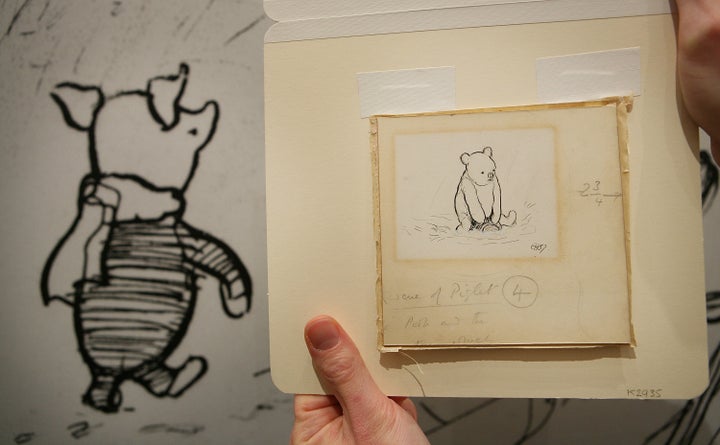
3. Before A.A. Milne wrote Winnie-the-Pooh in 1926, he wrote 19 plays, three novels and four screenplays.
On top of that, Milne was a writer and editor at Punch, a humor and satire magazine. He began writing children's poetry and literature after Christopher Robin was born. He submitted his first published poem to Vanity Fair, titled "Vespers," which was followed by a series of more poems and children's books including When We Were Very Young and A Gallery of Children.
Winnie-the-Pooh and The House at Pooh Corner were published in 1926 and 1928, respectively.
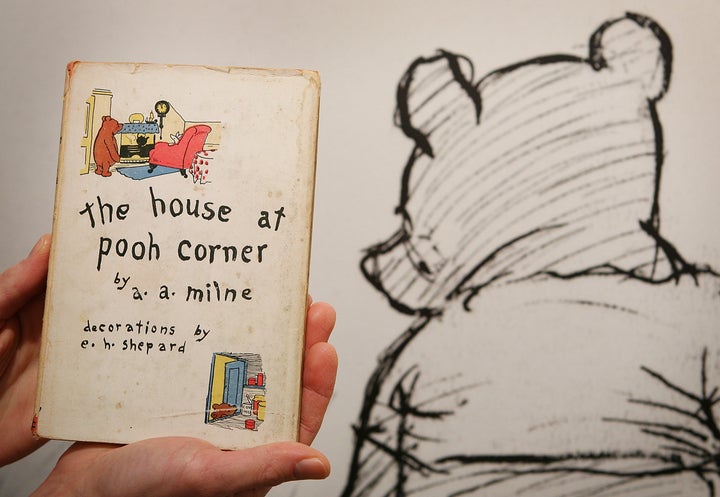
4. Milne was fascinated by his son's relationship with his toys.
Before "Toy Story" ever hit theaters, Milne accurately captured the period in a child's life when a boy or girl transitions from viewing their stuffed animals as a true friend to leaving childhood imagination behind and relishing their toys as what they are -- toys.
A passage from The House at Pooh Corner exemplifies this, when Christopher Robin, who loved more than doing "Nothing" with Pooh, attempted to explain to Pooh that they would be spending less time together:
Then suddenly again, Christopher Robin, who was still looking at the world with his chin in his hands, called out "Pooh!"
"Yes?" said Pooh.
"When I'm -- when -- Pooh!"
"Yes, Christopher Robin?"
"I'm not going to do Nothing any more."
"Never again?"
"Well, not so much. They don't let you."
...
"Pooh, when I'm -- you know -- when I'm not doing Nothing, will you come up here sometimes?"
"Just me?"
"Yes, Pooh."
"Will you be here, too?"
"Yes, Pooh, I will be really. I promise I will be, Pooh,"
"That's good," said Pooh.
"Pooh, promise you won't forget about me, ever. Not even when I'm a hundred."

5. Milne met his future Pooh collaborator, illustrator E.H. Shepard, through an editor at Punch magazine.
After meeting via Punch, Shepard illustrated Milne's poetry collection, When We Were Very Young. The drawings for Winnie-the-Pooh occurred after many in-person discussions between Shepard and Milne, hand-written letter exchanges, and visits to the real-life Hundred Acre Wood -- Ashdown Forest. Their relationship was very collaborative; the fact that Milne shared royalties from the book with Shepard is proof.
Milne wrote the following in Shepard's personal copy of Winnie-the-Pooh:
"When I am gone,
Let Shepard decorate my tomb,
And put (if there is room)
Two pictures on the stone:
Piglet from page a hundred and eleven,
And Pooh and Piglet walking (157) ...
And Peter, thinking that they are my own,
Will welcome me to Heaven."
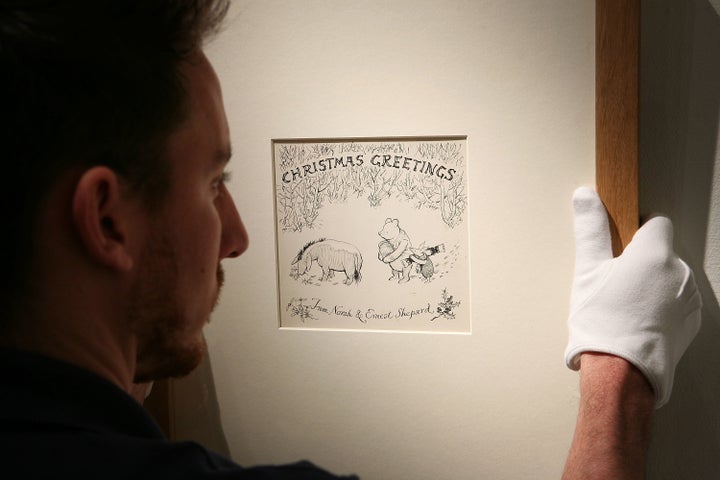
6. Today, more people visit Milne's Pooh manuscripts than Isaac Newton's annotated copy of Principia.
Since 1926, the total continuous printing of Winnie-the-Pooh has amounted to around 20 million books sold. It has been translated into 50 different languages, including a Latin version that became a New York Times bestseller. According to a YouGov poll from 2014, Winnie-the-Pooh is England's most beloved children's book of the last 150 years, followed by Lewis Carroll's Alice's Adventures in Wonderland and Eric Carle's The Very Hungry Caterpillar.
All this is to say: Milne was a creative pioneer who history will remember as not only the man who made Pooh, but the writer who gave children's stories the complexity and richness they deserved. Rest in peace, Alan Alexander.
Much of this research is collected from the new book, The Natural World Of Winnie-The-Pooh by Kathryn Aalto, now available. For more on the real forest that inspired the Hundred Acre Wood, check out more coverage here.
Also on HuffPost:

